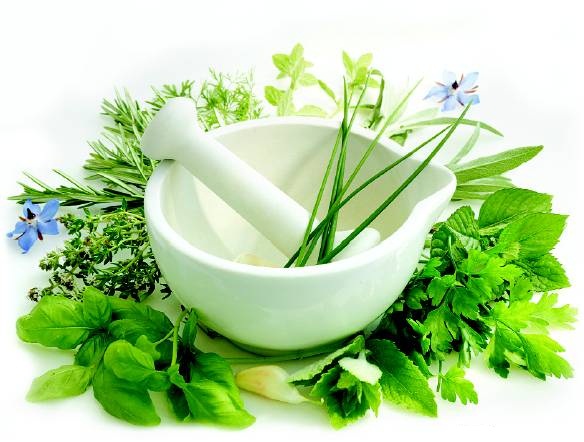Trees play an important role in our life. Felling of trees disturbs the Eco-system. We should preserve trees and plants with great care.
· Trees release oxygen which we need for our life. They also absorb the carbon-dioxide.
· Many living species live in trees. Trees form the natural habitat of many animals, birds and insects.
· Trees help make the land fertile. We get good crops out of fertile land.
· They are the sources of the fruits and flowers.
· They offer us cool shade during summer.
· During rainy season, we take shelter under the trees.
· Trees and plants are the sources of many supply life-saving drugs.
· They prevent land erosion and guard us against pollution. Thus, trees keep up the ecological balance.
· Trees protect us from inclement wind also.
· Seeds, nuts and fruits are food sources for humans and animals.
Recent years have witnessed a renewed interest in plants as pharmaceuticals in the Western world.
The term "herbs" refers to plants or parts of them, including grasses, flowers, berries,
seeds, leaves, nuts, stems, stalks and roots, which are used for their therapeutic
and health- enhancing properties. Plants are the original source materials
for as many as 40% of the pharmaceuticals in use in the United States today.
We eat plants, drink their juices, ferment and distill libations from them, and consume them in a thousand forms.
Ingredients in plants, from carbohydrates, fats and protein to vitamins and minerals, are part of our body composition and chemistry.
Recently the World Health Organization estimated that 80% people worldwide rely on herbal medicines for some aspect.
Trees are world's natural pollutant sink. Trees are known to fix and metabolize carbon-dioxide and carbon monoxide both photo-synthetically and non-photo-synthetically.
In recent years, the utility of trees in controlling the pollution problems has been recognized particularly air and noise pollution.
Growing ornamental plants result in relief of certain gaseous pollution and other plants have got purifying qualities such as bamboo, palms, lily etc.
Plants with branches that move and vibrate to absorb and mask sound like Pipal, Mango,Conifers, Bamboo etc.
One of the simplest ways to reduce the effects of pollution is to increase flora.



Drinking Clean Water:- Drinking clean water is one of life’s basic necessities. Healthy forests help keep streams clean and water quality high by promoting soils that provide natural filtration and vegetative cover that minimizes soil erosion and sediment runoff. Most of municipal water systems use water that originates from forestland, including those managed for wood production. The quality of this source water is among the best in the nation.
You may not be aware that trees work just as hard to protect and purify our water sources, including those that provide drinking water for millions of Americans every day.
Trees improve water quality by slowing rain as it falls to the Earth, and helping it soak into the soil. They also prevent soil
from eroding into our waterways, reduce storm water runoff, and lessen flood damage. They serve as natural filters
to protect our streams, rivers and lakes.
Healthy and Nutritious food: - Plant-based foods offer several key nutrients, and you should include them in every meal. These foods add plenty of vitamins and minerals to your diet but are generally low in fat and calories. Plants provide nutrition in the form of macro nutrients, which contain calories for energy.
Plants provide several important minerals you need in your diet. Minerals are inorganic substances that plants absorb through soil
by their roots or from rainwater hitting their leaves.Vitamins are organic substances made by plants. You need vitamins in your diet for normal everyday functioning.
Weight loss and fitness:- Plants contain less calories.Calories are necessary for survival.Fat carries twice as many calories as carbs and protein. One gram of fat has 9 calories vs. carbs and protein sat 4. Plants are lower in fat. Some plants do contain fats – the good fats like unsaturated oils not Tran’s fats linked to high cholesterol and heart disease.
Plants balance calories with high nutrition. Many like Fred detwiler at plants – smart living are discovering that losing weight with plants is really simple.
To control weight you have to consume less energy than you burn and more exercise can burn calories faster. Losing weight with plants is sustainable long – term, reinforced by how it really works and makes you feel better.

Breath clean air: - We need trees for the very air we breathe. Trees absorb carbon dioxide and, in turn, give off oxygen. But trees are even doing more for us than providing oxygen… Because we have a surplus of carbon dioxide in our atmosphere, Earth is experiencing dramatic climate change and the Greenhouse Effect.
The CO2 released into the atmosphere traps heat and prevents its escape into space. Trees help to absorb some of this excess CO2, working as "carbon sinks." Trees lower local air temperatures by transpiring water and providing shade. They also can block winds in the winter. Thus, they can reduce home heating and cooling costs and the need for fossil fuels burned to make electricity.
One mature tree can absorb carbon dioxide at a rate of 48 pounds per year and will release enough oxygen back into the atmosphere to support 2 human-beings for a year. Trees clean the air by removing gaseous pollutants through absorption.

Herbal:- Plants have been used for medicinal purposes long before prehistoric period. Ancient Unani manuscripts Egyptian papyrus and Chinese writings described the use of herbs. Evidence exist that Unani Hakims, Indian Vaids and European and Mediterranean cultures were using herbs for over 4000 years as medicine. Indigenous cultures such as Rome, Egypt, Iran, Africa and America used herbs in their healing rituals, while other developed traditional medical systems such as Unani, Ayurveda and Chinese Medicine in which herbal therapies were used systematically.
The forest in India is the principal repository of large number of medicinal and aromatic plants, which are largely collected as raw materials for manufacture of drugs and perfumery products.
Recently, WHO (World Health Organization) estimated that 80 percent of people worldwide rely on herbal medicines for some aspect of their primary health care needs. According to WHO (World Health Organization), around 21,000 plant species have the potential for being used as medicinal plants.


